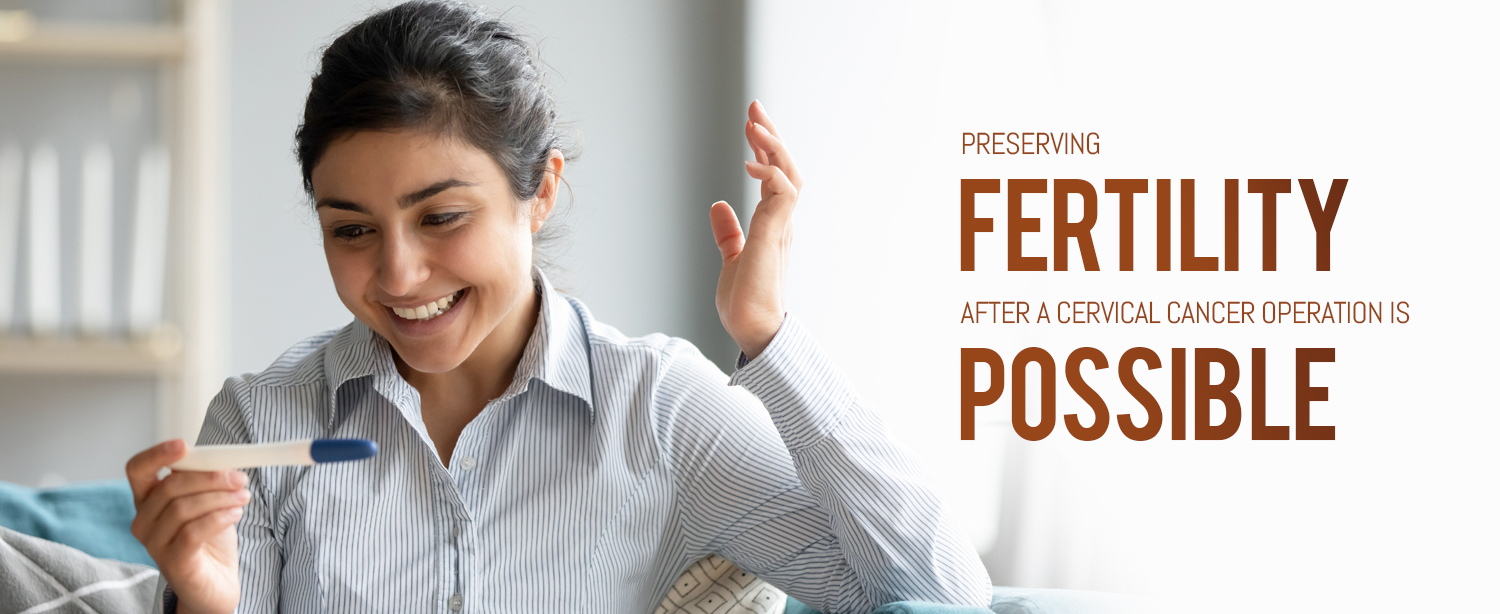An anxious 29 yrs old lady walked in my clinic with her husband and family members. She was recently diagnosed with cervical cancer and was advised surgery, which would essentially render her infertile (As conventional surgery for cervical cancer requires complete removal of uterus). As she was childless was very keen to know if, any surgical option is available, which can preserve her fertility. Fertility preservation surgery (Radical Trachelectomy) is an accepted treatment for cervical cancer, but there are strict criteria to identify eligible patients.
After counseling and examination, we started evaluating this patient to identify, if she was a suitable candidate for fertility preserving surgery, which included MRI to note the extent of size and spread. After completion of all necessary tests, she was identified as a suitable patient for radical trachelectomy.
Radical trachelectomy is a surgery in which only the diseased cervix along with lymph nodes are removed, leaving behind the upper part of the uterus which is then sutured with vagina. Also whenever possible this should be done by a minimally invasive (Keyhole) approach, so the handling of tissues during surgery is less and hence problems for future conception are avoided. The Robotic assisted surgery works best in this situation as the suturing of the uterus with vagina can be extremely difficult and the endowrist instruments with magnified 3D vision makes this part of the procedure as well as the dissection extremely safe and effective. At Kokilaben Dhirubhai Ambani Hospital,
We discussed and counseled the patient and her husband about the surgery and the advantages of using Robotic platform. She underwent Robotic Radical trachelectomy with bilateral pelvic lymph node dissection at Kokilaben Dhirubhai Ambani Hospital and Research center .. Her postoperative recovery was uneventful and was discharged from the hospital on 5th Postoperative day. She will be closely observed for a period of 1 year and then if things are fine she can attempt pregnancy.
Cervical cancer is the most common Genital tract cancer seen in Indian women with an incidence on 22.9/100000 women. Every year over 122000 new cases are diagnosed in India and almost 67000 women die every year because of this disease. Radical trachelectomy is an established surgery for early stage cervical cancer for women who desire future fertility.
Unfortunately in India, women do not present early hence there are not many patients who can undergo this operation. This was second such case operated at our hospital. The first case was a 4-year-old girl diagnosed with cervical cancer. Robotic assisted surgical platform is of great help in performing these surgeries as, the technology allows you to overcome some of the problems you face when you do these complex surgeries and also help patient recover fast postoperatively.
In the end it was great to see smile back on her face, not only relieved of all the stress and anxiety regarding her cancer treatment, but also being able to preserve her ability of being a mother.
Dr Yogesh Kulkarni,
Consultant, Gyn Oncology & Robotic Surgeon
Kokilaben Dhirubhai Ambani Hospital. Mumbai
M: 93215427311


